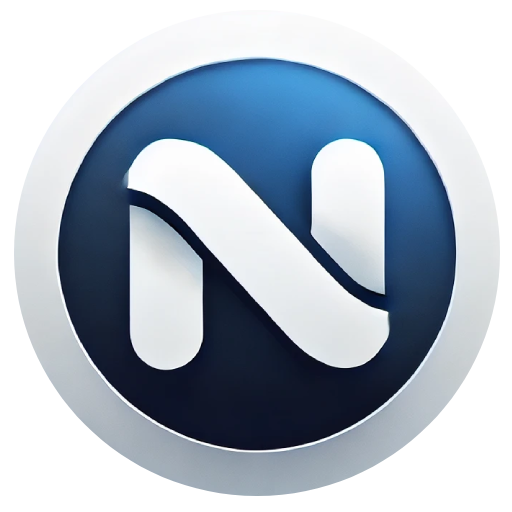Namecheap and GoDaddy have each spent more than two decades helping millions of site owners get online and stay online. Both are reliable, battle-tested brands with broad product catalogs and global reach.
Below, we’ll break down where each one shines (and where it falls short) across pricing, features, performance, support, and growth potential so you can decide which is the better fit for your website today—and as you scale.
Namecheap vs. GoDaddy High-Level Comparison
Both providers deliver dependable hosting with simple onboarding and strong uptime track records. GoDaddy is a household name with an extremely beginner-friendly flow for buying a domain, spinning up hosting, and launching a site. Namecheap counters with aggressive pricing, generous freebies, and painless site migrations.
GoDaddy manages significantly more domains overall, while Namecheap serves tens of millions of customers, too. Either way, you’re choosing an established brand with large-scale infrastructure and mature tooling.
Each offers shared, VPS, dedicated, and managed WordPress hosting. Differences emerge in the details—such as SSL handling, migration support, storage allocations, and backup policies—which we unpack below.
Products and Services Offered by Namecheap and GoDaddy
Both companies sell domains with free privacy protection, SSL certificates, email, and a range of hosting plans. Namecheap includes lifetime domain privacy on registrations and bundles a limited number of one-year SSL certificates with shared plans. GoDaddy includes SSL with many hosting tiers (details vary by plan) and offers a streamlined WordPress stack with built-in security and updates.
Namecheap provides shared, VPS, dedicated, and WordPress hosting, plus affordable professional email and reseller options. GoDaddy matches those core hosting types, also supports Windows hosting for .NET/ASP workloads, and offers a broad ecosystem of add-ons, backups, and marketing tools.
Feature-for-feature, GoDaddy’s higher-tier plans typically bundle more storage, daily backups, and integrated extras. Namecheap tends to prioritize lower pricing, straightforward plans, and strong included security on day one.
Company Health and Stability of Namecheap and GoDaddy
GoDaddy has been operating since 1997; Namecheap launched in 2000. Both remain financially stable and widely recognized. GoDaddy manages an enormous share of the world’s domains, while Namecheap oversees tens of millions as well—each with the scale and experience to support business-critical sites.
Leadership and corporate structures change over time, but the key takeaway for buyers is long-term operational stability, broad documentation, and large support teams—boxes both companies check.
Namecheap vs. GoDaddy Pricing Comparison
Both brands are known for aggressive introductory deals on shared hosting. Exact promos and renewal prices change often, so focus on what’s included at checkout and what your plan renews at after the first term.
Namecheap’s shared tiers typically start at a very low introductory rate for the first year and renew at a still-competitive monthly price. Entry plans often include multiple sites, ample SSD storage, and bundled email.
GoDaddy’s entry shared plan usually costs more at renewal but can include perks like daily backups, one-click WordPress, robust storage, and SSL depending on the tier and term length.
If you value rock-bottom first-term pricing, Namecheap generally wins. If you want more bundled tools on higher tiers (and don’t mind a steeper renewal), GoDaddy can make sense—especially if you’re consolidating domain, email, and WordPress management in one place.
Pricing Structure of Namecheap and GoDaddy
Both bill monthly with deeper discounts for longer commitments, typically offering the best pricing on 12–36-month terms. As always, weigh introductory rates against renewal costs and required add-ons (backups, SSL beyond the first year on certain plans, malware protection, etc.).
GoDaddy sells multiple shared tiers from basic personal sites to higher-resource plans suitable for growing businesses. Expect plan-by-plan increases in storage, CPU/RAM availability, and bundled features at renewal.
Namecheap offers three shared tiers (Stellar, Stellar Plus, Stellar Business) with generous resources for the price. Renewal jumps are typical across the industry; Namecheap’s remain competitive.
Cost Comparison of Namecheap and GoDaddy
On pure sticker price, Namecheap is usually cheaper and includes more sites and mailboxes at the lower tiers. GoDaddy costs more on renewal, but higher plans bundle additional storage, backups, and performance features that can reduce the number of third-party tools you need.
If your priority is the lowest ongoing bill, Namecheap is tough to beat. If you want a one-stop shop with more platform-level conveniences and don’t mind paying extra later, GoDaddy can be worth it.
For small businesses, Namecheap’s Stellar Business competes well on value. For heavier workloads, GoDaddy’s mid-to-upper shared tiers (and managed WordPress plans) add the headroom growing sites need.
Trials and Guarantees for Namecheap and GoDaddy
GoDaddy offers a 30-day money-back guarantee on hosting and a free trial for its website builder, plus a published 99.9% uptime guarantee on hosting plans.
Namecheap offers a 30-day money-back guarantee on hosting, a published 100% monthly uptime guarantee with service-time credit for unscheduled downtime, and limited free trials on select products like EasyWP and Pro Email.
Namecheap vs. GoDaddy Core Criteria Comparison
We evaluated both hosts across uptime, performance, support, scalability, price, migrations, and managed WordPress. Here’s how they compare.
Namecheap and GoDaddy aren’t the absolute best options for every use case—providers like Bluehost and Dreamhost often beat them for WordPress-specific value—but GoDaddy is better for small to midsize teams planning to scale on a single platform, while Namecheap is ideal for budget-minded sites that still want solid performance and straightforward plans.
Compare both against other top hosts in our review of the best web hosting providers.
Site Uptime—Namecheap Wins
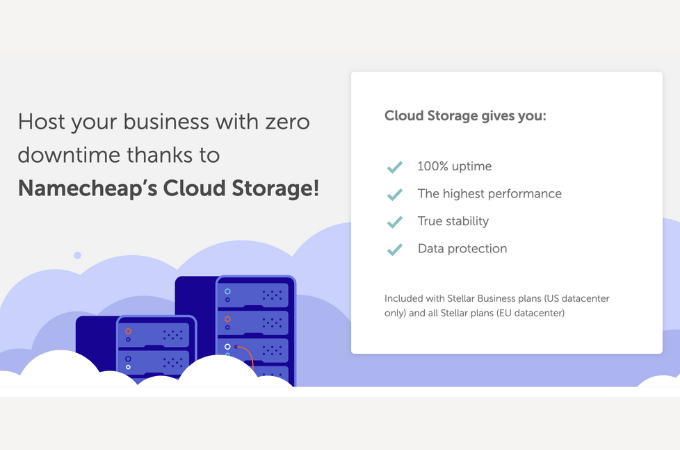

Namecheap publishes a 100% monthly uptime guarantee on many plans and issues service credits for unscheduled downtime. In practice, its shared and business hosting typically hover at 99.99% uptime—excellent for most sites.
VPS and reseller uptime guarantees are often lower (industry-standard 99.9%), but Namecheap’s real-world reliability remains competitive with bigger brands.
GoDaddy advertises a 99.9% uptime guarantee across hosting. In independent tests, it regularly performs above that threshold, with minimal monthly downtime.
Site Speed—GoDaddy Wins
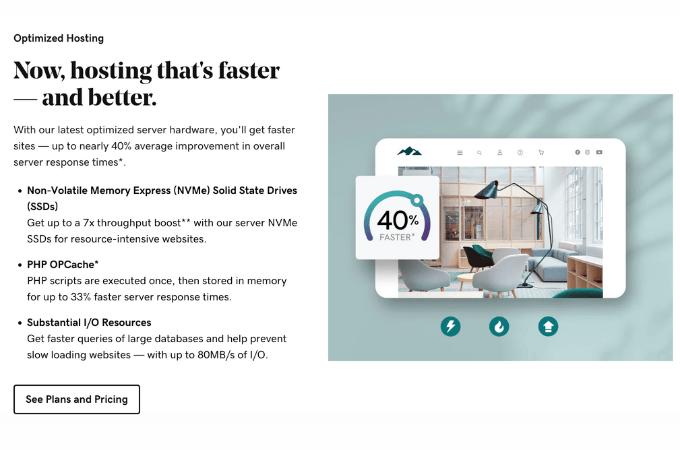

First impressions happen fast—users start bouncing when pages take longer than ~3 seconds. GoDaddy’s optimized stack, CDN options, and higher-tier resource allocations help it edge out Namecheap in most speed tests, especially under load.
Namecheap’s shared plans are perfectly serviceable for blogs and small business sites, but media-heavy sites or surging traffic usually benefit from upgrading resources or moving to VPS/managed WordPress for consistently faster response times.
Customer Support—Namecheap Wins
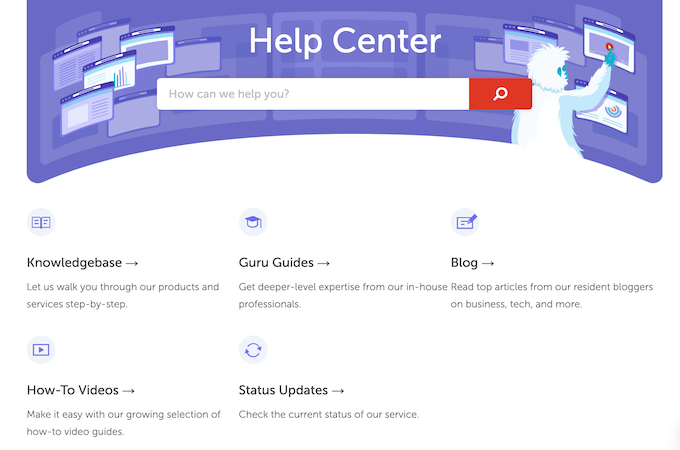

Both offer 24/7 help. GoDaddy supports phone and chat; Namecheap focuses on chat and tickets. Feedback trends suggest Namecheap resolves most issues quickly and consistently, while GoDaddy’s experience can vary depending on the queue and complexity—but generally gets you to a fix.
Traffic Volume—GoDaddy Wins
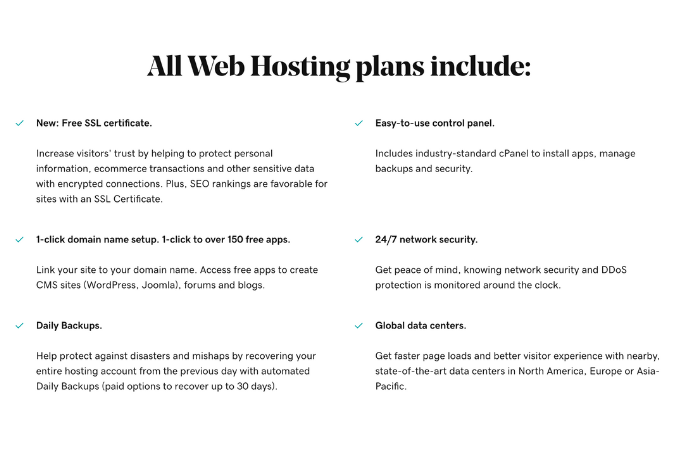

Both hosts advertise unmetered bandwidth. GoDaddy’s mid- and upper-tier shared plans add more CPU/RAM and burst capacity, and its global data centers plus built-in caching/CDN options help when traffic spikes.
Namecheap scales well for light-to-moderate traffic, and its VPS and dedicated options offer clear upgrade paths. For sustained surges or heavier ecommerce, GoDaddy’s higher-spec plans have a slight edge out of the box.
Price—Namecheap Wins


Think in total cost of ownership: intro price + renewal + required add-ons. GoDaddy’s entry pricing is higher and renewals steeper, but some tiers include SSL for the life of the plan and daily backups. Namecheap’s first-term deals are cheaper and renewals remain budget-friendly, though certain extras (like paid SSL after the first year on shared plans) can add to the bill.
Bottom line: if you want maximum value per dollar and can self-select only the add-ons you truly need, Namecheap is the better bargain. If you prefer more features bundled into a single provider—even at a premium—GoDaddy is comfortable and convenient.
Migration Features—Namecheap Wins


Many hosts migrate sites for free, but Namecheap backs its process with clear guarantees, rapid turnaround, and minimal downtime. Hand over your credentials and their team handles the move—quickly.
GoDaddy offers automated and guided migrations—especially for WordPress—which work well for many users. Timelines vary by site complexity. If you want hands-on, time-boxed migrations with service credits for delays, Namecheap is the safer pick.
Managed Hosting—GoDaddy Wins
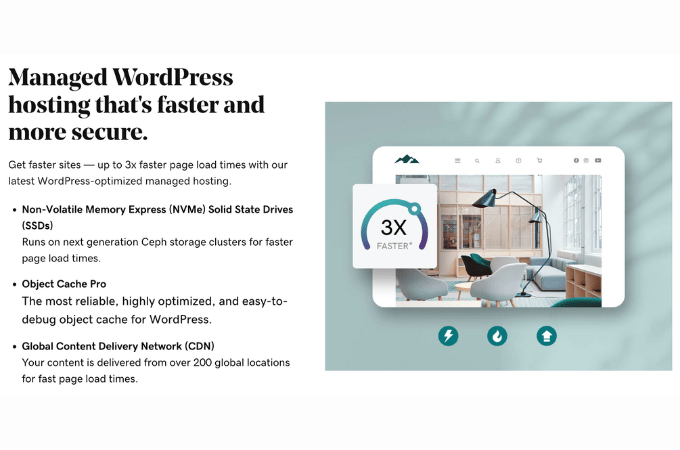

Managed WordPress is about removing maintenance headaches—core updates, security hardening, backups, and performance tuning. Namecheap’s EasyWP offers a low-friction path with a free trial; plans remain inexpensive and fast for most small-to-midsize WordPress sites.
GoDaddy’s managed WordPress plans lean in on simplicity and protection (malware scanning/removal, WAF, backups) and often undercut comparable full-service managed hosts on introductory price. If you want “set it and forget it” WordPress with strong guardrails, GoDaddy’s managed stack is the better package.
Final Verdict
For the lowest total cost with reliable performance, easy migrations, and solid support, choose Namecheap. If you want more features bundled, faster tiers out of the box, and a seamless path from domain to managed WordPress, choose GoDaddy.
GoDaddy and Namecheap are broadly similar on paper. In practice, Namecheap wins on value and migrations; GoDaddy wins on speed, higher-tier resources, and managed WordPress polish. Pick the host that aligns with your budget, growth plans, and appetite for built-in tools.
